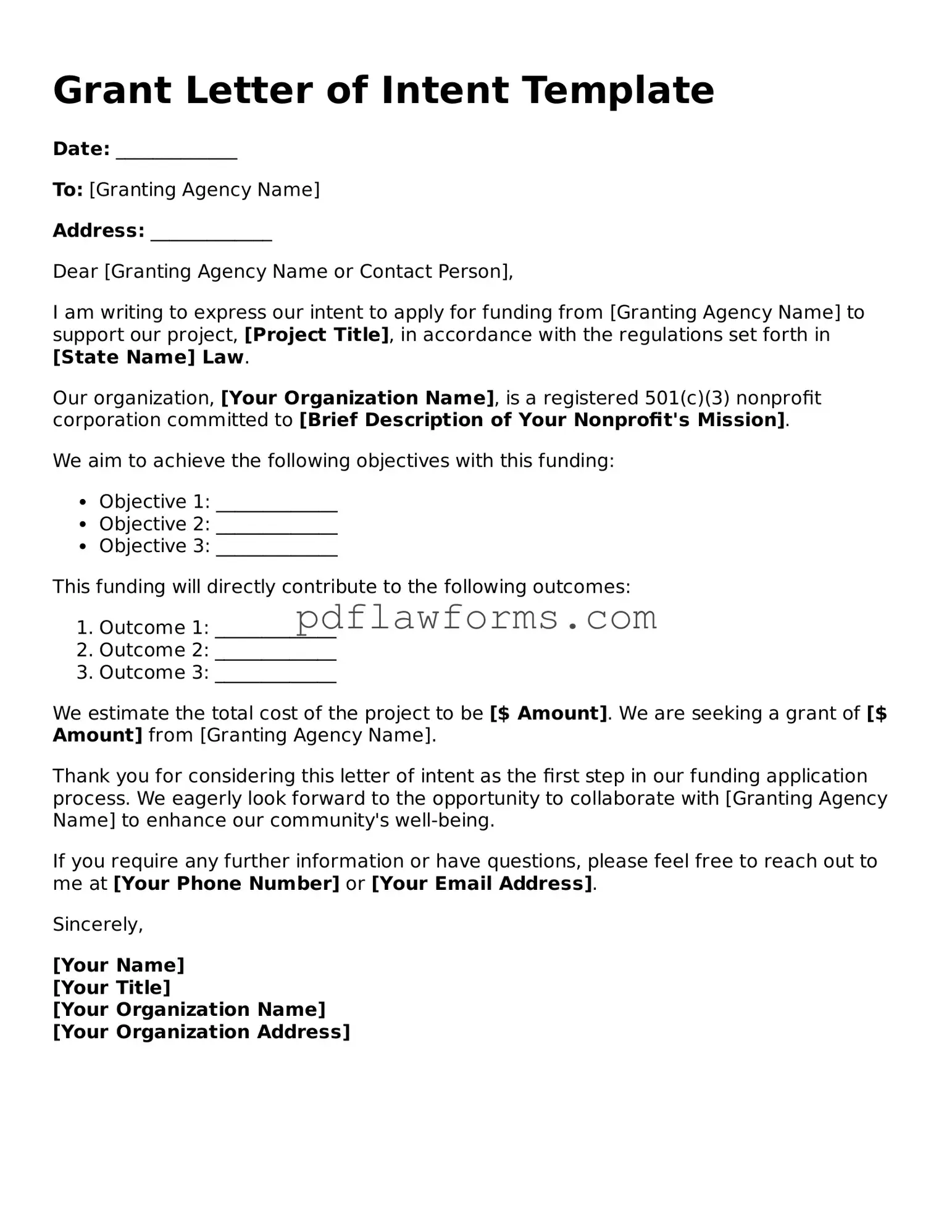Filling out a Grant Letter of Intent (LOI) can be a critical step in securing funding. However, many individuals and organizations make common mistakes that can hinder their chances of success. One frequent error is failing to adhere to the specific guidelines provided by the funding agency. Each grantor has unique requirements regarding format, length, and content. Ignoring these details can lead to immediate disqualification.
Another common mistake is being vague about the project goals. When applicants do not clearly articulate what they aim to achieve, it can create confusion for the reviewers. Specificity is essential. Clearly defined objectives help convey the project's purpose and significance, making it easier for reviewers to understand its potential impact.
Additionally, applicants often neglect to provide adequate background information about their organization. Reviewers need context to assess the capacity and credibility of the applicant. Failing to include relevant history, achievements, and qualifications can leave a negative impression.
Many applicants also underestimate the importance of demonstrating community need. A compelling LOI should address why the project is necessary and how it will benefit the target population. Without a clear explanation of the need, the proposal may lack urgency and relevance.
Another mistake involves overlooking the budgetary considerations. A well-prepared budget is crucial to any grant application. Applicants sometimes fail to provide a realistic and detailed budget, which can raise concerns about the feasibility of the project. Reviewers expect to see how funds will be allocated and the rationale behind those decisions.
Moreover, applicants may forget to proofread their LOI. Spelling and grammatical errors can detract from the professionalism of the submission. A polished document reflects attention to detail and respect for the review process. Submitting a letter with mistakes can signal a lack of commitment.
Finally, some individuals submit their LOI without seeking feedback from others. Peer review can be invaluable. Constructive criticism can help identify weaknesses and improve clarity. Engaging colleagues or mentors in the review process can enhance the overall quality of the submission.
